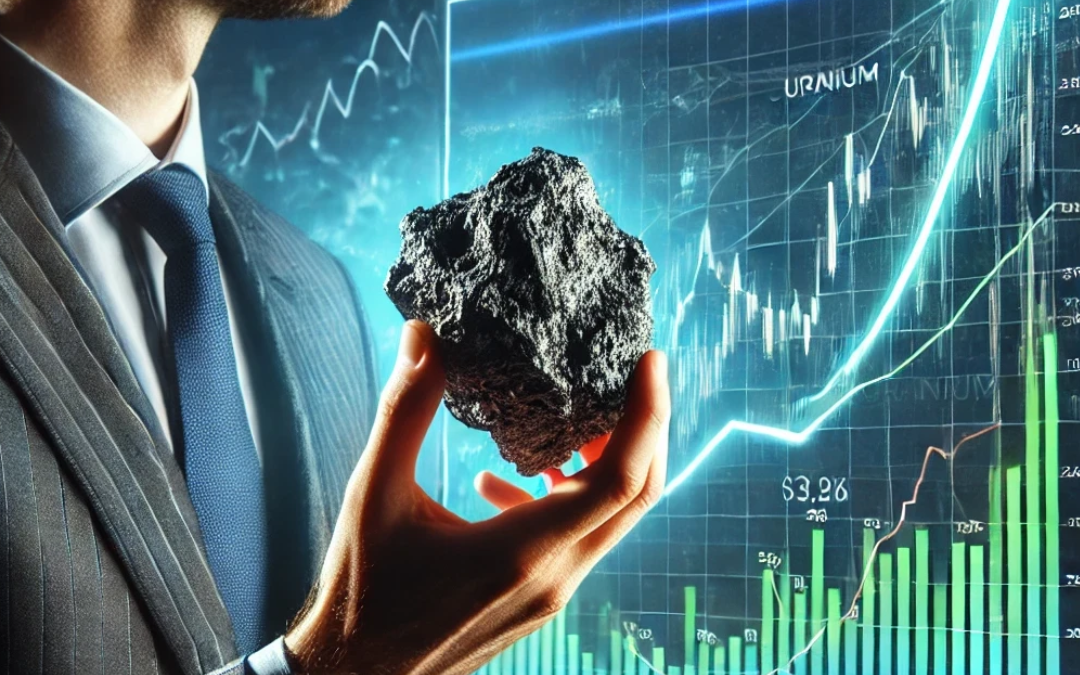
- Price forecast: $135 per pound by 2026
- Global nuclear energy expansion boosting demand
- Supply constraints and geopolitical risks adding upward pressure
Bank of America analysts have set a striking price forecast for uranium, predicting it could hit $135 per pound by 2026, driven by a combination of strong demand growth and ongoing supply constraints. This bullish outlook on the uranium market is supported by several global trends, including the expansion of nuclear energy infrastructure, the role of clean energy in achieving carbon neutrality, and geopolitical factors affecting supply chains.
Global Nuclear Energy Expansion Driving Demand
A central factor behind the rising price of uranium is the rapid expansion of nuclear energy infrastructure worldwide. Nations aiming for carbon reduction goals are turning to nuclear power as a key player in their clean energy portfolios. Countries like China, India, and several in the Middle East are investing heavily in the construction of new nuclear reactors to meet growing energy needs while reducing reliance on fossil fuels.
China, for instance, aims to significantly increase its nuclear capacity, with plans to build over 150 new reactors by 2060. India is also targeting a near 50% increase in nuclear power by 2030. The expected growth in the nuclear fleet will require a steady and increasing supply of uranium, putting upward pressure on the market.
Supply Constraints and Geopolitical Risks
While demand for uranium is poised to surge, supply constraints remain a key driver of price increases. The uranium mining sector has struggled to keep pace with demand, largely due to several years of underinvestment. Following the Fukushima disaster in 2011, the uranium market saw a prolonged period of depressed prices, leading many mining companies to scale back production or shut down entirely. As a result, the market now faces a shortfall in supply just as demand is rising.
In addition to production challenges, geopolitical instability in major uranium-producing regions has further strained the supply chain. Key producers like Kazakhstan and Russia have faced increasing scrutiny and trade restrictions. Kazakhstan, the world’s largest uranium producer, has seen production limitations tied to both political factors and environmental policies. Russia, traditionally a significant player in the uranium enrichment market, faces sanctions and export challenges due to the ongoing conflict in Ukraine. These disruptions contribute to supply uncertainty, making uranium a more sought-after commodity.
Rising Interest in Clean Energy
The broader global push toward clean energy sources also plays a role in uranium’s rising demand. Many countries have committed to achieving net-zero carbon emissions by mid-century, and nuclear power is recognized as one of the most reliable and large-scale sources of carbon-free energy. In Europe, discussions about extending the life of existing nuclear plants and building new ones are gaining momentum. Even in the U.S., where nuclear energy has faced political hurdles in the past, there is renewed interest in utilizing next-generation reactors to meet emissions targets.
Additionally, innovations in the nuclear energy space, such as Small Modular Reactors (SMRs) and advanced reactor technologies, are attracting investment. SMRs, in particular, are seen as a way to scale up nuclear energy deployment with lower upfront costs and shorter construction timelines. This new generation of reactors could further increase demand for uranium, especially as many countries see nuclear as a key tool in their energy transition strategies.
Financial Investors Turning to Uranium
Beyond physical demand, uranium has caught the attention of financial investors. As prices rise and supply remains constrained, hedge funds and other institutional investors are increasingly looking to uranium as a commodity that offers significant potential for price appreciation. This influx of speculative buying has helped push prices up, and Bank of America analysts expect continued investor interest as global supply-demand imbalances deepen.
The launch of uranium-focused exchange-traded funds (ETFs) and other investment vehicles has made it easier for financial players to enter the market. The increased speculative activity is likely to contribute further to price volatility and upward momentum.
Conclusion
The convergence of growing global nuclear energy demand, supply constraints, and geopolitical risks has created a perfect storm for the uranium market. As countries increasingly turn to nuclear power to meet climate goals and as mining operations struggle to keep pace, prices are expected to rise substantially. According to Bank of America analysts, uranium could reach $135 per pound by 2026, a significant jump from current levels, with demand driven not only by energy producers but also by financial investors looking to capitalize on a tightening market.
With the nuclear energy sector playing a pivotal role in the global clean energy transition, uranium’s future is looking brighter than ever—both for producers and investors.
*This is not financial advice.

